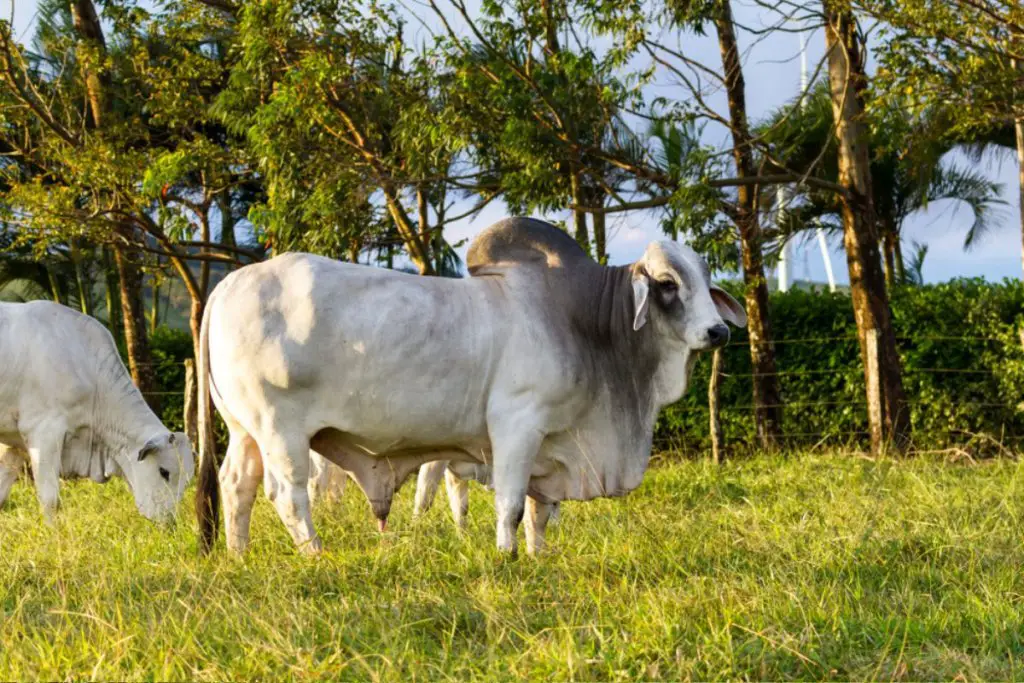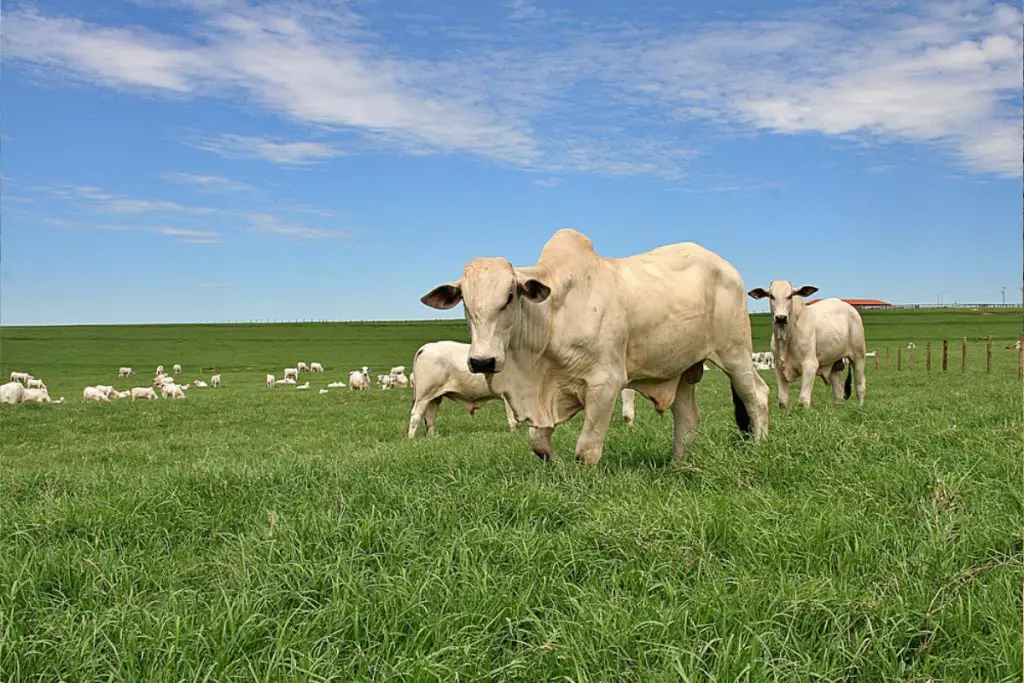Believed to be the oldest domesticated cattle in the world, Zebu cattle have an interesting history that dates back thousands of years from Southern Asia.
Today we invite you on a journey to explore and learn more about Zebu cattle on their exciting history, facts, multiple uses, and other general information.
You’ll also learn about the one unique breed of Zebu that you can keep as a pet alongside other domesticated animals you may already have.
Let’s get down to it!
Table of Contents
The History And World Distribution Of Zebu Cattle
The origin of Zebu cattle (Bos taurus indicus) traces to South and Southwest Asia. It is believed that they came from the now extinct Indian aurochs (Bos primigenius namadicus).
Scientists have over the years categorized Zebu cattle as a distinct species (Bos indicus) and as a subspecies of domestic cattle, bearing the scientific name Bos taurus indicus.
The somewhat confusing usage of the two species and subspecies names is attributable to the presence of a Bos taurus and Bos indicus genome in Brahman cattle, which is caused by repeated backcrossing of females of Bos taurus to males of Bos indicus.
But I fear this article is becoming too serious…
Zebu cattle are usually called by other names such as Brahman cattle (mainly in the US), indicine cattle, and humped cattle.

Even though they are humped, Zebu cattle are actually from non-humped descendants. The cattle are believed to have evolved over thousands of years from three Indian cattle breeds—the Gir, Nelore, and the Guzerat.
From Southwest Asia, Zebu cattle were exported to Africa quite early on before exportations began to Brazil and the United States.
Zebu cattle taken to Brazil from India were bred with Brazilian cattle to produce the crossbreed initially called Indu-Uberaba, which later became Indu-Brazil.
After importation into the US, the Zebu (Brahman) has been crossbred by breeders with taurine cattle like the American Angus to produce the Brangus and the Charolais to produce the Charbray.
The crossbreeding concept for the Brahmans or Zebu also featured in Australia and led to the development of the Australian Brangus and the Australian Charbray.
Zebu cattle have spread to all the continents. They are now available in their cumulative millions in places like the US, Brazil, the Middle East, Pakistan, China, Australia, Madagascar, Kenya, India, and most of the countries in Southeast Asia.
Major Breeds Of Zebu Cattle
There are about 75 recognized breeds of Zebu cattle. Some of these are a crossbreed of Zebus with different taurine (domesticated cattle).
The major Zebu cattle breeds include:
- Miniature Zebu aka the Nadudana (the smallest Zebus recognized as naturally occurring without human influence in breeding)
- Red Sidhi
- American Brahman (“Brahman” is often used interchangeably with “Zebu”.)
- Gir (or Gyr)
- Nelore
- Guzerat
- Sibi or Sibi bhagnari (largest of the Zebus. Can attain 3,500 pounds in weight)
- Indo-Brazilian Zebu
- Cholistani
- Sahiwal
- Baggara (in eastern Africa)
What Are The Characteristics Of Zebu Cattle?
Some characteristics of Zebus usually vary given the large number of breeds of Zebu cattle. The following are among the most notable ones.
- The hooves and upper half of a Zebu have a dominant gray color, while white dominates along the legs and the belly. Other common Zebu colors include red or brown, which sometimes manifest in a spotted pattern.
- Hump located above the shoulders
- Loose skin around the neck (called the dewlap—which helps keep flies away)
- Large ears (good for heat dissipation). Some have drooping ears.
- Both Zebu cows and bulls are horned. The horns point up and sweep back.
- Wide field of view because the eyes are located on the side of the head
- Rare calving difficulties since the calves are small
- Sustained resistance to bovine viruses, parasites, and diseases
- Hardiness and survivability in hot, dry climates because they have more sweat glands than other breeds of cattle.
- Heat tolerance as they can withstand high temperatures because of the hump and long ears, which help with heat dissipation.
- More adaptive to subtropical regions than European cattle
- Lifespans of 20-25 years (especially in the wild) and 12-16 years as domestic cattle. Zebus grow quite slowly, but those raised as beef cattle are usually harvested sooner.
- Peculiar leisurely grazing lifestyle.
The Rich Personality Of Zebu Cattle
Despite their generally small size, Zebu cattle have a big heart—but not quite literally!
The Zebus are generally docile and calm cattle. They are highly social animals that relate well amongst themselves, often choosing to live together as a large number of organized bulls, cows, and their offspring.
Zebu cattle live in large herds throughout the year, especially when they are let to roam grasslands and tropical plains at liberty, even when they are domesticated.

The simulation of the wild in such domesticated setups allows Zebu cattle to practice an organized lifestyle where the group observes a hierarchical order under the leadership of one dominant bull.
The hierarchy provides for different levels of seniority based on dominance, age, and sex. All the junior animals must show their respect and submission, failure to which disciplinary action happens, usually in the form of an attack.
Although Zebu cattle are docile, they turn aggressive if they must protect their breeding rights and territory.
Miniature Zebu Cattle
The Miniature Zebu particularly has the biggest heart of all Zebu, given their social nature, docility, and intelligence.

When raised by hand, Miniature Zebu are approachable, personable, easy to handle, gentle, and sociable. They relate well with children and do not mind sharing their environment with other domestic animals like sheep, birds, dogs, and goats.
The gentility and small size of Miniature Zebu make them ideal for keeping as a family pet, a common practice in places like America.
What Are Zebu Cattle Good For?
Since ancient times, humans have had multiple uses for Zebu cattle. Here’s a quick overview of the uses of Zebu cattle.
- As beef cattle (Zebus produce about 60% lean meat)
- As dairy cattle, despite their low milk production
- Making dairy products like ghee in India, yogurt among the Maasai of Kenya, and cheese in Madagascar
- Sports such as rodeo in North America and bullfighting in Madagascar.
- Obtaining by-products like leather. The horns and bones are used in the craft industry to make jewelry.
The cow dung serves as a disinfectant, farm manure, building material, and fuel. Zebu fat is a raw material for making hair shine, rust-proofing products, and candles.
- As draft cattle (Zebu cattle are considered sacred and only used as draft animals and for milk and riding in India)
- As a symbol of wealth and social status among pastoral communities like the Maasai and the Fulani.
- As sacrificial animals or offerings in ceremonies
- Pastoral and nomadic communities like the Maasai of Kenya harvest Zebu blood as a fortifying drink.
Closing Thoughts
Although Zebu cattle are small animals, you’ll want to have plenty of grazing space with lots of flowers, seeds, and grass to feed them all year round.
The Miniature Zebu, whose pedigrees are preserved by the International Miniature Zebu Association, is particularly an excellent breed to keep together with your hand-raised cattle and other domesticated animals.
You won’t expect a high milk or beef yield and draught power from the Nadudana, but you’ll enjoy their docile temperament.
